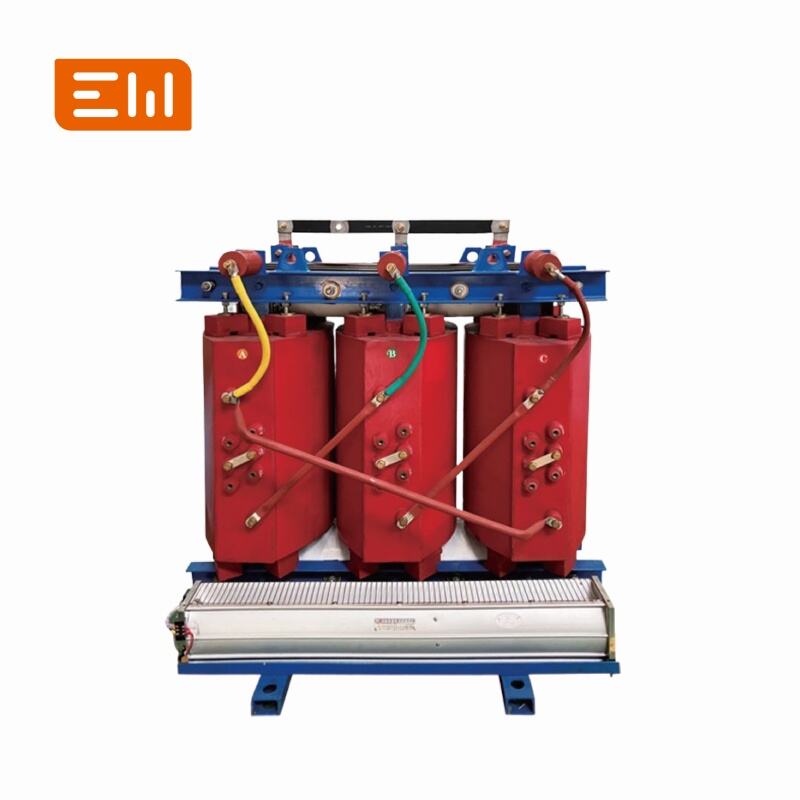How to Read a Dry Type Transformer's Nameplate: A Guide
The nameplate on a dry type transformer is its official identification card. It contains a wealth of critical information required for safe installation, operation, and maintenance. Understanding how to read and interpret this data is an essential skill for any electrician, engineer, or facility manager.
This guide will break down the key elements you'll find on a typical transformer nameplate.

Key Information on the Nameplate
1. Manufacturer Name & Serial Number
This identifies the company that built the transformer (e.g., Enwei Electric) and the unique serial number for tracking, warranty, and service purposes.
2. kVA or MVA Rating
This is the apparent power capacity of the transformer. A transformer may have a dual rating (e.g., 1000/1333 kVA) which corresponds to its AN (Air Natural) and AF (Air Forced) cooling capacities.
3. Primary & Secondary Voltage
This indicates the rated voltages for the high-voltage (HV) and low-voltage (LV) windings. For example, HV: 13800V, LV: 480Y/277V.
4. Number of Phases
This will state whether the transformer is designed for a single-phase or three-phase system.
5. Frequency (Hz)
The operational frequency the transformer was designed for, typically 50 Hz or 60 Hz.
6. Percent Impedance (%Z)
As detailed in our guide on impedance, this value is critical for calculating the available fault current and for paralleling transformers. It's typically between 4% and 8%.
7. Winding Material
This specifies whether the windings are made of Copper (Cu) or Aluminum (Al).
8. Insulation Class & Temperature Rise
This indicates the thermal limits of the transformer. For example, "Insulation Class 180°C (H)" means the insulation system can withstand a maximum temperature of 180°C. The "Temperature Rise" (e.g., 115°C) is the maximum allowable temperature increase above ambient temperature at full load.
9. Tap Settings
The nameplate will list the available tap settings for adjusting the primary voltage. This is often shown as a percentage of the rated voltage (e.g., +2.5%, -2.5%) and the corresponding voltage value for each tap.
10. Vector Group / Wiring Diagram
For three-phase transformers, this indicates how the windings are connected (e.g., Delta-Wye) and the phase relationship between them. A common vector group is Dyn11, which signifies a Delta-connected primary, a Wye-connected secondary with a neutral, and a 30-degree phase shift.
11. Enclosure Type (IP Rating)
This specifies the degree of protection the enclosure provides against solids and liquids. For example, IP21 is standard for indoor use. You can learn more in our IP ratings guide.
12. Total Weight
This is the total weight of the transformer, which is critical information for shipping, rigging, and ensuring the mounting location can support it.
13. Standards
The nameplate will list the manufacturing and performance standards the transformer complies with (e.g., IEC, ANSI/IEEE).
Conclusion: A Blueprint for Your Transformer
The transformer nameplate is more than just a label; it is a complete blueprint of the unit's capabilities and characteristics. Taking the time to read and understand this information is the first step in ensuring the transformer is applied correctly and safely within your electrical system.
Always refer to the nameplate before installation or maintenance, and if you have any questions about the data on your https://www.enweielectric.com/products/transformers/dry-type-transformers">Enwei Electric transformer, do not hesitate to https://www.enweielectric.com/contact-us">contact us with your model and serial number for support.

